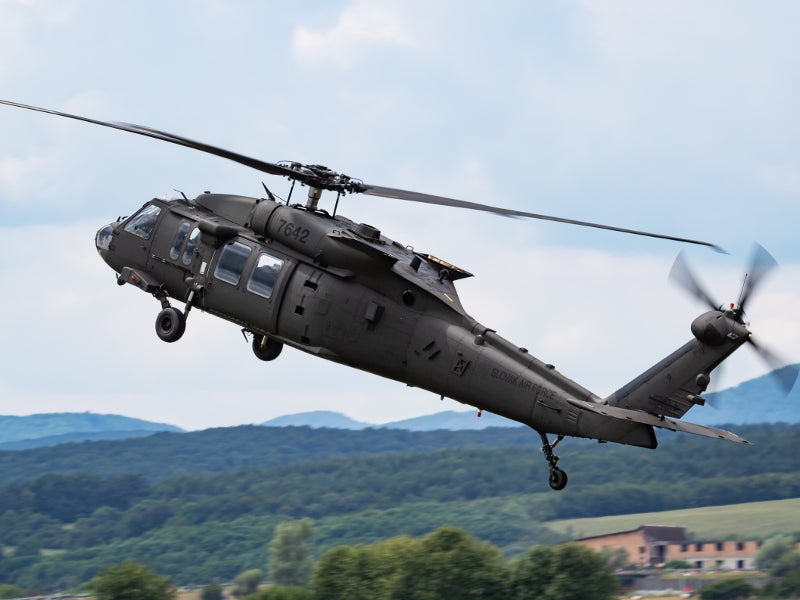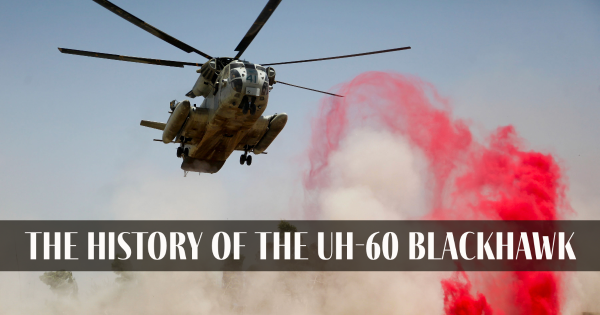Accomplishing Quality: Secret Strategies for UH 60 Helicopter Maintenance
Accomplishing Quality: Secret Strategies for UH 60 Helicopter Maintenance
Blog Article
Comprehending the Mechanics and Design Behind Uh 60 Helicopters
The UH-60 helicopter, commonly known as the Black Hawk, stands as a peak of contemporary rotorcraft innovation, personifying a mix of robust design and detailed auto mechanics. As we peel back the layers of the UH-60's design, a world of complex systems and careful engineering comes to light.
Background of UH-60 Helicopters
The history of UH-60 helicopters traces back to the late 1970s when the United States Army looked for a flexible and sophisticated energy helicopter to change its aging fleet. In feedback to this need, the Sikorsky Airplane Firm developed the UH-60 Black Hawk helicopter. Presented in 1979, the UH-60 rapidly became a staple in military operations because of its excellent capabilities.
The UH-60 was created to master a selection of missions, including troop transport, clinical discharge, digital warfare, and special procedures. Its capability to adapt to various roles made it a useful possession to the U.S. uh 60. Army and various other military pressures all over the world
Over the years, the UH-60 system has gone through a number of upgrades and variants to improve its performance and equal advancing goal needs. These helicopters have actually seen substantial solution in conflicts such as the Gulf War, Afghanistan, and Iraq, showcasing their dependability and flexibility in diverse functional settings. The UH-60's abundant background is a testimony to its enduring legacy as a premier energy helicopter.

Engine and Power Equipments
Utilizing innovative propulsion modern technology, UH-60 helicopters are geared up with sophisticated engine and power systems to guarantee ideal performance and reliability in an array of operational scenarios. The UH-60, generally understood as the Black Hawk, is powered by two General Electric T700-GE-701D engines, each capable of providing up to 1,940 shaft horsepower. These turboshaft engines supply the essential drive for the helicopter to perform its objectives successfully, consisting of troop transport, medical discharge, and fight assistance.

Blades System and The Rules Of Aerodynamics
Just how do the rotor system and aerodynamics of UH-60 helicopters contribute to their operational performance and flight abilities? The rotor system of the UH-60 helicopter plays a critical duty in offering lift and propulsion.
Aerodynamics also play a vital function in the efficiency of UH-60 helicopters. The streamlined body and blades blade design decrease drag, enabling the helicopter to achieve higher rates and far better fuel efficiency. The aerodynamic layout of the UH-60 additionally adds to its ability to operate in varied environmental problems, including high elevations and warm temperature levels.
Avionics and Trip Control Equipment

In its intricate control with the blades system and the rules of aerodynamics of UH-60 helicopters, the avionics and trip control systems develop a vital network of modern technologies shaping the airplane's functional capacities. In the UH-60, these systems include electronic screens, interaction radios, General practitioner navigation, weather radar, and autopilot systems.
The flight control systems of the UH-60 are accountable for equating the pilot's inputs right into the suitable modifications to the blades system, guaranteeing stable trip and ability to move. These systems contain hydraulic actuators, servos, and computer systems that function with each other to manage the tail important link and primary blades, as well as various other flight control surface areas. By exactly handling the helicopter's trip dynamics, these systems make it possible for pilots to perform a large range of goals, from transportation and search-and-rescue to battle operations, with accuracy and self-confidence.
Duty and Applications in Air Travel
The role and applications of avionics and trip control systems in aviation are integral to making sure the safe and reliable procedure of aircraft, including UH-60 helicopters. Avionics systems in UH-60 helicopters encompass a series of electronic systems that help you could look here in navigation, interaction, surveillance, and regulating different aircraft functions. These systems include electronic displays, autopilot systems, interaction radios, GPS navigating tools, and weather radar. Trip control systems play a crucial duty in navigating the helicopter airborne, maintaining stability, and guaranteeing accurate activities. The fly-by-wire innovation used in contemporary UH-60 helicopters equates pilot inputs right into electronic signals, which are after that translated by the flight control computers to readjust the airplane's control surfaces. In addition, these systems incorporate safety attributes such as autopilot settings, terrain understanding alerting systems, and security enhancement systems to enhance the overall safety and security and functional capacities of the UH-60 helicopters in different missions, including troop transport, clinical evacuation, search and rescue, and airborne firefighting.
Conclusion
In verdict, the UH-60 helicopter is a versatile aircraft with an abundant history and advanced engineering. Its engine and power systems, blades system, aerodynamics, avionics, and trip control systems all function with each other to make it a trustworthy and reliable device.
In its wikipedia reference complex coordination with the rotor system and aerodynamics of UH-60 helicopters, the avionics and trip control systems create a critical network of technologies forming the aircraft's functional capacities.The flight control systems of the UH-60 are liable for converting the pilot's inputs right into the suitable changes to the blades system, making certain steady flight and ability to move. Avionics systems in UH-60 helicopters include a range of digital systems that aid in navigation, communication, tracking, and controlling various aircraft functions. Furthermore, these systems incorporate safety features such as auto-pilot modes, surface understanding warning systems, and stability augmentation systems to improve the general safety and security and functional capabilities of the UH-60 helicopters in different missions, consisting of troop transportation, clinical evacuation, search and rescue, and airborne firefighting.
Its engine and power systems, blades system, aerodynamics, avionics, and flight control systems all work with each other to make it a trustworthy and reliable equipment.
Report this page